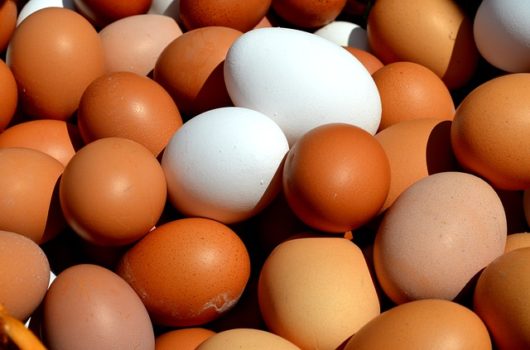Have you ever been midway through a recipe and reached to use the eggs in your refrigerator only to notice that the date on the box has expired and wondered if the eggs were still okay to use? Where does that date come from anyway? Is that the date you should use them by, is that the date they were shipped, or the date before which you should buy them? You’ve been told the date on the side of the box it’s not an accurate method for knowing an egg’s freshness, and you’re likely correct.
Most often, eggs are just fine for baking purposes even well after the date on the box. This article explains how to understand the date on the egg carton, as well as two other simple methods you can use to check your eggs freshness before cooking with them.
Though our homestead chickens typically lay one egg a day in their nesting boxes, every now and then we find an egg tucked into an odd corner of the nesting box, or the chickens will lay an abundance of eggs (more than we have need for) and our egg supply can pile up in the refrigerator.
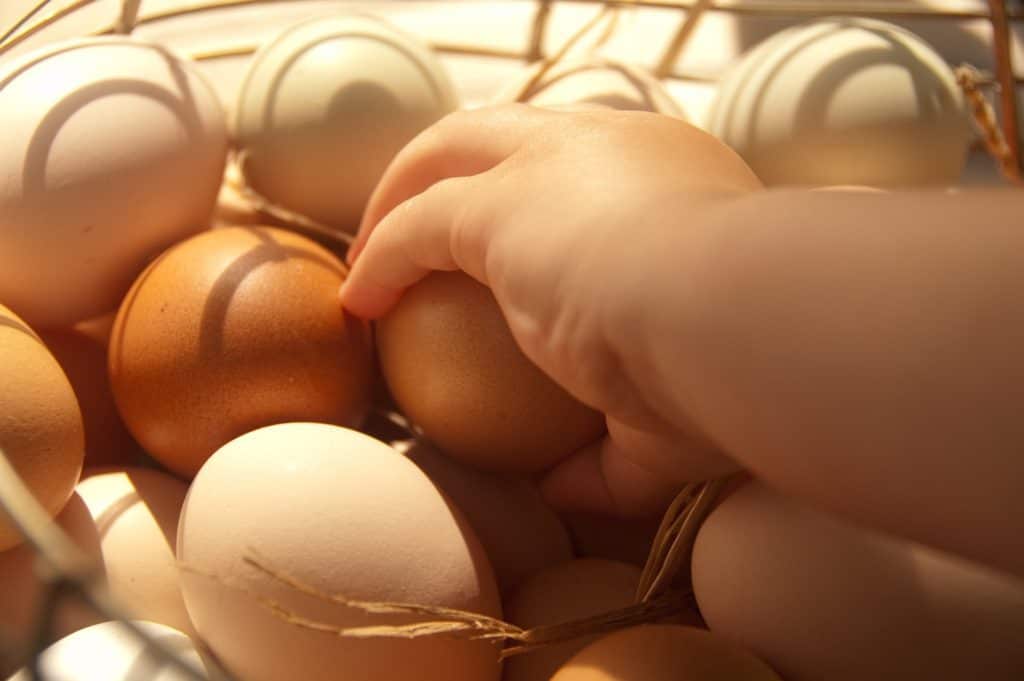
We have a regular weekly “egg-route” we deliver to friends and neighbors, so our freshest eggs always go first, and our personal household egg supply can pile up. When this happens, I always use the newest eggs first for baking, as fresh eggs almost always bake better. I wrote an article about the benefits of cooking with fresh eggs here. Sometimes, however, I will use the float test to determine which eggs are freshest and the best to use. I will describe this test below. Most folks however, use store bought eggs and will need to know how to decipher the date on the side of the box.
What is that date on the side of the egg carton?
When you have bought eggs at a store, you may have noticed the numbers and date printed on the side of the carton. Typically, most people only pay attention to the top, right date, or “best before” date. The numbers on the side of the carton tell a bit more than simply when the eggs are “best used by” however.
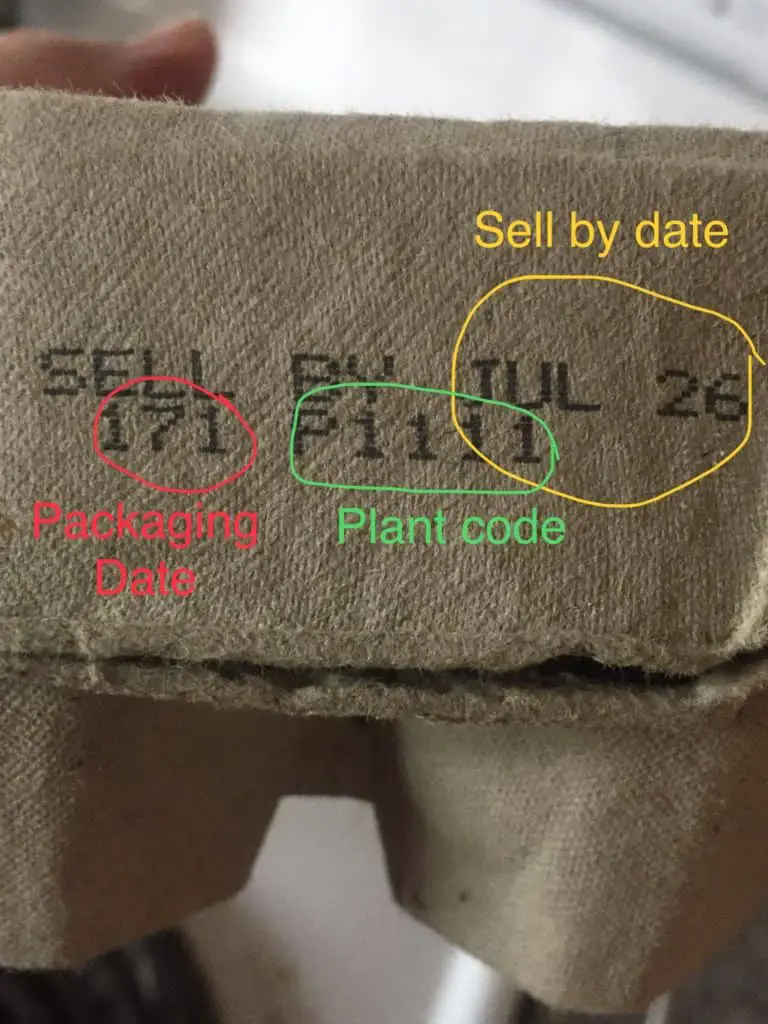
Specifically, the bottom right series of numbers is indicative of the packing plant number. The first two or thee digits of the bottom line refer to a date in the Julian calendar (from Julius Caesar) out of 365 days when the eggs were packaged. For example, the picture below shows digits 171, which corresponds to June 20th, or the 171st day of the year. (on a non leap year). So, the eggs in the picture above were packed on June 20th. The “sell by date” at the top right is the date by which the seller recommends you buy them (here, July 26th). The number on the bottom right corresponds to the packing plant code, P1111.
If you are interested in looking up the plant, simply click here and enter the plant code. The code for the plant in this photo is Oakdell Egg Farm in Pasco, Washington. The plant code lookup is a service provided by the United States Department of Agriculture Poultry and Egg Grading Program.
Leave the Bloom on the Egg
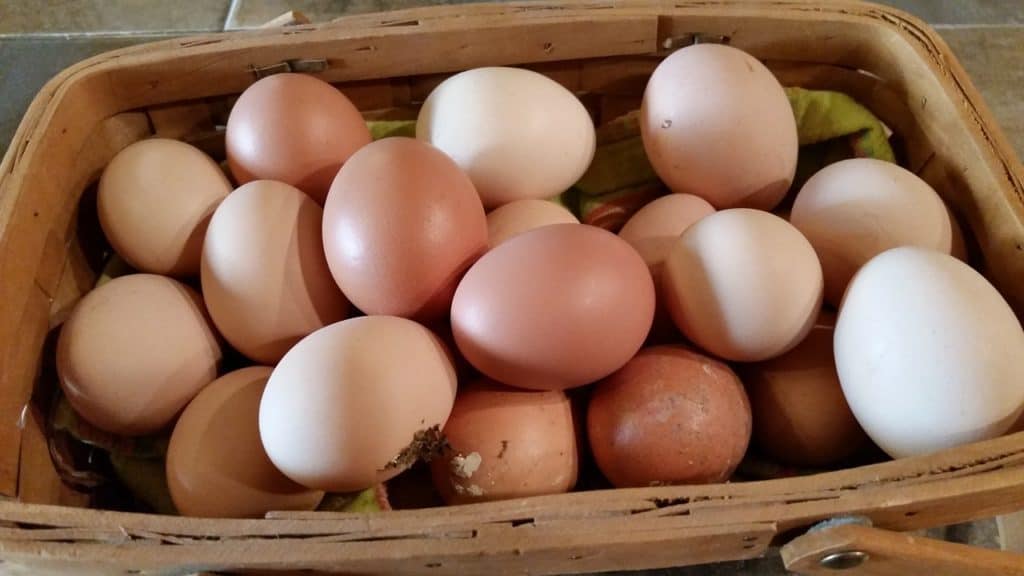
If you have your own backyard chicken flock, you may be tempted to wash them as soon as you gather them. DON’T DO THIS. When you wash a fresh chicken egg, you remove the microscopic “bloom” or cuticle from the egg which is a natural coating on the eggshell that seals the shell’s pores, and keeps bacteria out. It’s the egg’s pores that will help you to determine whether the egg is old or not. We explain below.
Ever Heard of the Egg Float Test?
If you can’t remember when you bought your eggs, or are uncertain whether or not you should use them, don’t worry. All you need is a bowl of cold water. You may have heard of the famous “float test” to determine whether eggs are still good. We use this method if we happen to find an old cache of eggs hidden in the yard, an egg hidden somewhere in the nesting box, or simply can’t remember when we put the last carton on our shelf in the kitchen refrigerator.

If you’re worried about the age of some eggs you may have in your refrigerator, just drop them gently in a bowl of cold water. (Use cold water so you don’t cook the eggs). Old eggs have had more time to allow air to be absorbed through the porous shell, thus giving the egg white and yolk a runnier consistency, and causing the egg to float. The eggshell becomes more porous as it ages, allowing more air to flow through. The more air that seeps through the shell, the larger the air cell or air sack (the small pocket of air between the egg membrane and the shell) inside becomes. Once the air cell is large enough, the egg will float.
Fresh eggs will sink to the bottom because the porous shell hasn’t allowed much air to penetrate yet.
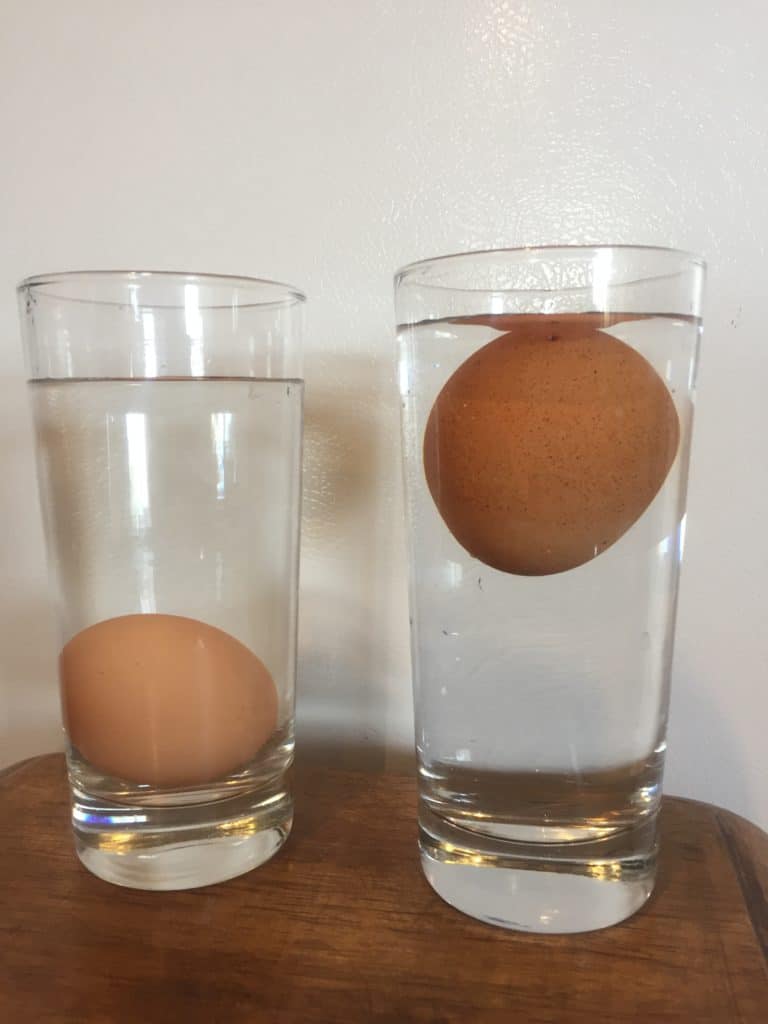
If your eggs sink to the bottom and lay on their side, they’re extremely fresh. If your eggs sink to the bottom but stand on one end they’re a few weeks old but still good to eat. If the eggs float to the surface, they’re no longer fresh, and I recommend you discard them.
Candling Method
Similarly, some people use a method called candling to determine the age of an egg, or whether an egg has a viable embryo for hatching. Candling is most typically performed when determining the growth and development of an embryo inside of an egg. Candling will allow you to determine the condition of the air cell, yolk, and white of an egg. It is done by simply holding a bright light source behind the egg that will show details through the shell.
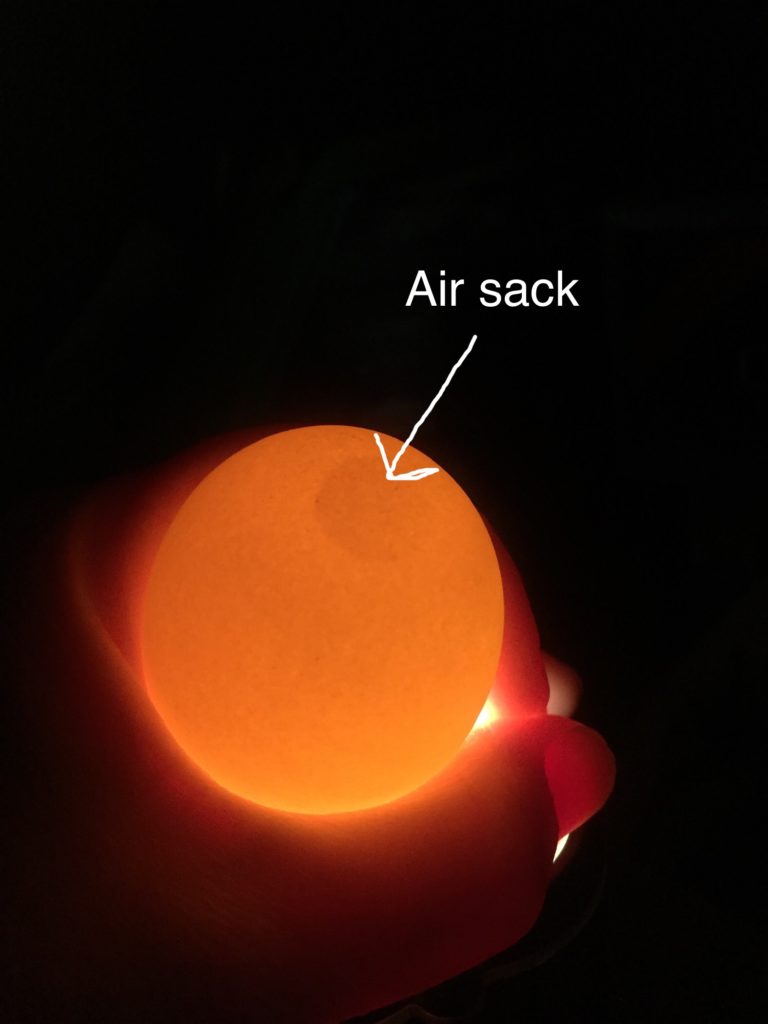
I will never forget doing this during my second grade class in elementary school. We had an incubator in our classroom full of eggs that were hatching out baby chicks. Every day for three weeks, my classmates and I would run in to the classroom and check the eggs to see if anything had begun to hatch. One day, about nine days into the incubation period, my teacher taught us about candling. We darkened the classroom and covered the windows, and then took turns looking at the eggs as she held them close to a very bright flashlight turning them from right to left. I remember seeing the dark spot at the center of the egg that was the baby chick’s eye, and later, being able to see blood vessels branching out from the center, and even little chicken feet, before the spot that was the chicken grew too big to see through.
Even a novice will be able to distinguish a fresh egg from a stale egg or detect abnormalities caused by incubation, such as blood spot, or a developing embryo. A fresh egg will show little to no air in the air sack between the shell and the egg membrane. An older egg will reveal an opaque larger air sack at the top of the egg.
Older Eggs are Best for Hard Boiling
If you conduct the float test and find that your eggs are not as fresh as you desire for baking (because fresh eggs are definitely best for baking), you may want to hard boil them. Old eggs are much easier to peel than fresh eggs once they are hard boiled, because the larger air sack between the shell and membrane of an older egg allow the shell to separate from the egg much easier.
Don’t Eat Bad Eggs!
If you’re not certain whether or not an egg has gone bad, you can always crack it open in a bowl and smell it. If you get any whiff of staleness, or that rancid sulferish aroma, discard it! Due to risks of Salmonella and other pathogenic bacteria present in eggs, it is always wise to err on the safe side. It is also always recommended to cook your eggs fully. I always cringe when watching the 80’s boxing movie Rocky when he drinks raw eggs during his training regimen. Not recommended! I highly doubt a Salmonella ridden Rocky Balboa could have withstood one round in the ring with Apollo Creed.

Though most eggs are not contaminated with salmonella, it is not worth the risk, as Salmonella can make you VERY sick. Be sure to cook your eggs to at least 165º F or until they are completely firm before eating.
And there you have it! All you need to know to test your own eggs for freshness at home.

